
A modern-day guide to building high-performing teams
Reading time: about 14 min
The importance of building a high-performing team has been around for a long time; after all, high-performing teams enhance innovation and customer satisfaction, strengthening customer advantage. On top of that, when individuals feel empowered to complete high-value work, they’re more engaged.
However, the workplace has changed and a core aspect of today’s working world is that hybrid teams have become more common, making some natural touchpoints more difficult to achieve.
As we navigate hybrid interactions, it’s more important than ever to foster collaborative and supportive work environments so that high-performing teams can develop. How can you build high-performing teams in today’s distributed workforce, and what characterizes a team as high-performing in the first place? This blog will provide you with modern-day strategies that every team needs in order to build a successful high-performing team.
What is a high-performing team?
High performance is not a destination—it’s a journey. High-performing teams focus on the Agile principles of collaboration, self-organization, and continuous improvement as they constantly learn. This drive for improvement is what truly sets high-performing teams apart.
While these teams rapidly iterate and deliver value at a pace that frequently exceeds expectations, they also prioritize quality and focus on the most impactful work. High performance teams:
-
Make changes when necessary, always prioritizing customer value. They focus on KPIs, such as amount of value delivered over time, cycle time, and customer satisfaction scores. Defect rates and high test coverage are also important metrics.
-
Beyond the numbers, they exhibit psychological safety, so team members feel comfortable taking risks and voicing their opinions. It’s important for leaders to lead by example and show that it’s safe to learn from mistakes.
-
They value clear goals and communication. They are empowered to make decisions and can connect their individual work to the organization’s overall vision.
Ultimately, high-performing teams are never satisfied with the status quo. They’re always looking for ways to optimize their processes, tools, and outcomes—and they do so at a sustainable pace, ensuring that team members don’t end up being overwhelmed or burnt out. This is achieved by cultivating a supportive work environment that empowers each team member to have autonomy and focus on high-quality work.
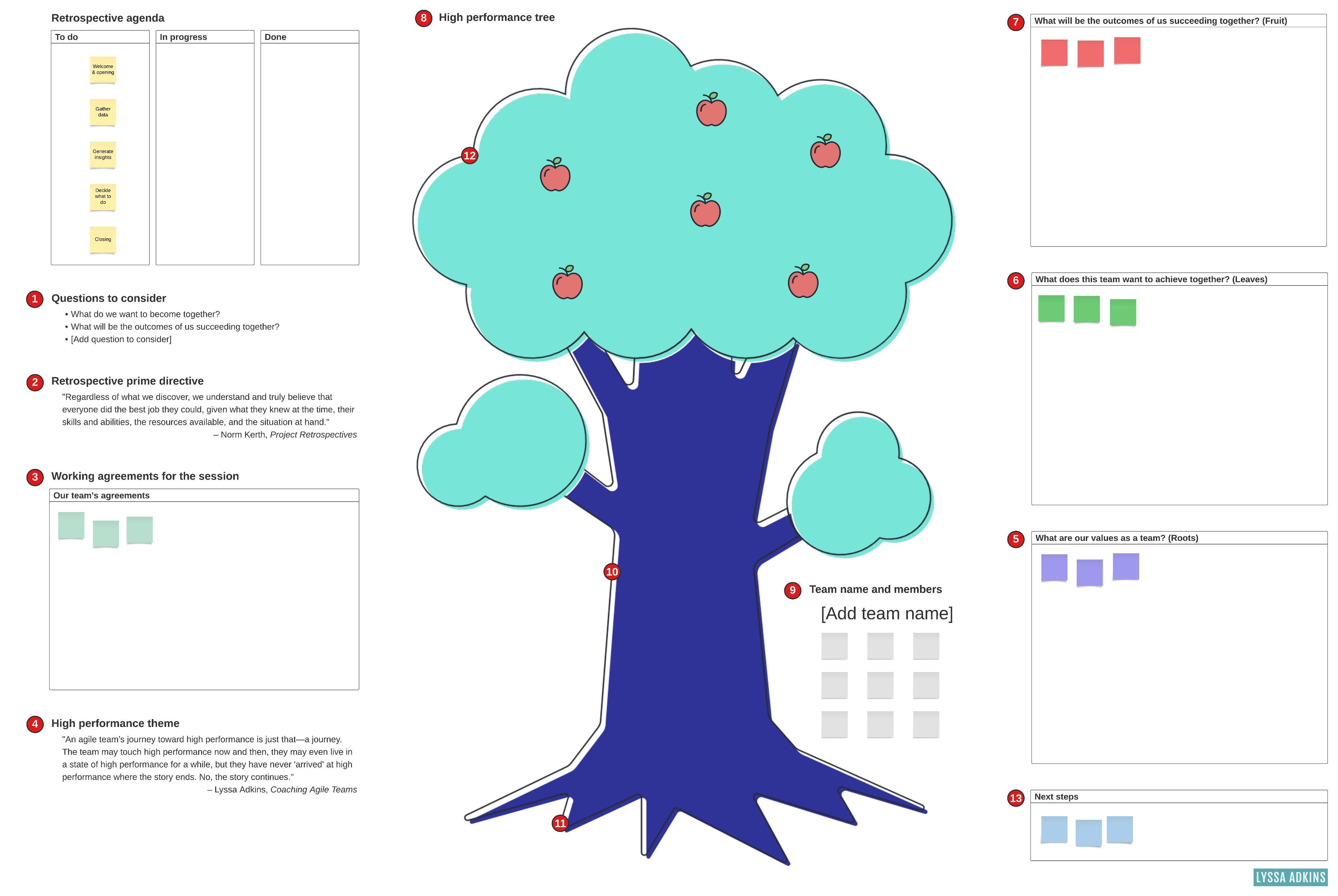
Characteristics of high-performing teams
High-performing teams focus on great teamwork, which begins by establishing values of openness, communication, respect, and commitment. These are five of the top characteristics of high-performing teams:
-
They communicate clearly. Given today’s hybrid workforce, there are a lot of opportunities for information to get lost. To improve communication, high-performing teams often establish daily check-ins, such as daily Scrum meetings or standups, to open the line of communication and make it easy to identify blockers. Teams also agree on protocols for communication and create document repositories so everyone understands where to go for information.
-
They engage in high-value collaboration. High performance teams foster intentional connection to build trust. Collaboration equity is difficult to accomplish, especially on distributed teams, so they focus on cultivating human relationships and use visual collaboration software in their meetings to encourage participation. By incorporating visuals into meetings, it’s easier to ensure that everyone has an equal opportunity to provide their ideas or ask questions.
-
They have a growth mindset. Growth doesn’t happen when people stay in their comfort zone. High-performing teams challenge themselves and try new things. This mindset starts with managers and other team leads, who should encourage a wide variety of ideas and show that it’s safe to fail. If individuals don’t see their leaders grow through a constant cycle of failing and learning, they won’t be encouraged to try new things themselves.
-
They celebrate accomplishments. High-performing teams cultivate a positive environment and frequently recognize each other’s achievements. Taking the time to recognize accomplishments is known as appreciative inquiry, a model of change management that helps organizations achieve outcomes with even greater impact. This positive culture can be very powerful; according to a study by Quantum Workplace, when people believe that their work will be recognized, they’re 2.7x more likely to be highly engaged.
-
They provide psychological safety. Psychological safety is a shared cultural belief among colleagues that they work in a safe, supportive environment. On a psychologically safe team, people feel like they can speak up, share ideas, ask questions, express concerns, and admit their mistakes without fearing negative consequences. This environment leads to stronger collaboration, increased satisfaction, and, often, a workplace culture that’s regarded as enjoyable and fun.
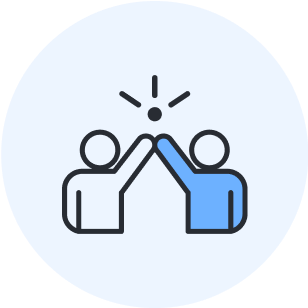
The 4 Cs of high-performing teams
Read about the top four traits that successful high-performing teams exhibit daily.
Learn moreHow to build a high-performing team
Now you know the top characteristics of high-performing teams, but how do you get started on creating one? These are the steps you can take to successfully build a high-performing team.
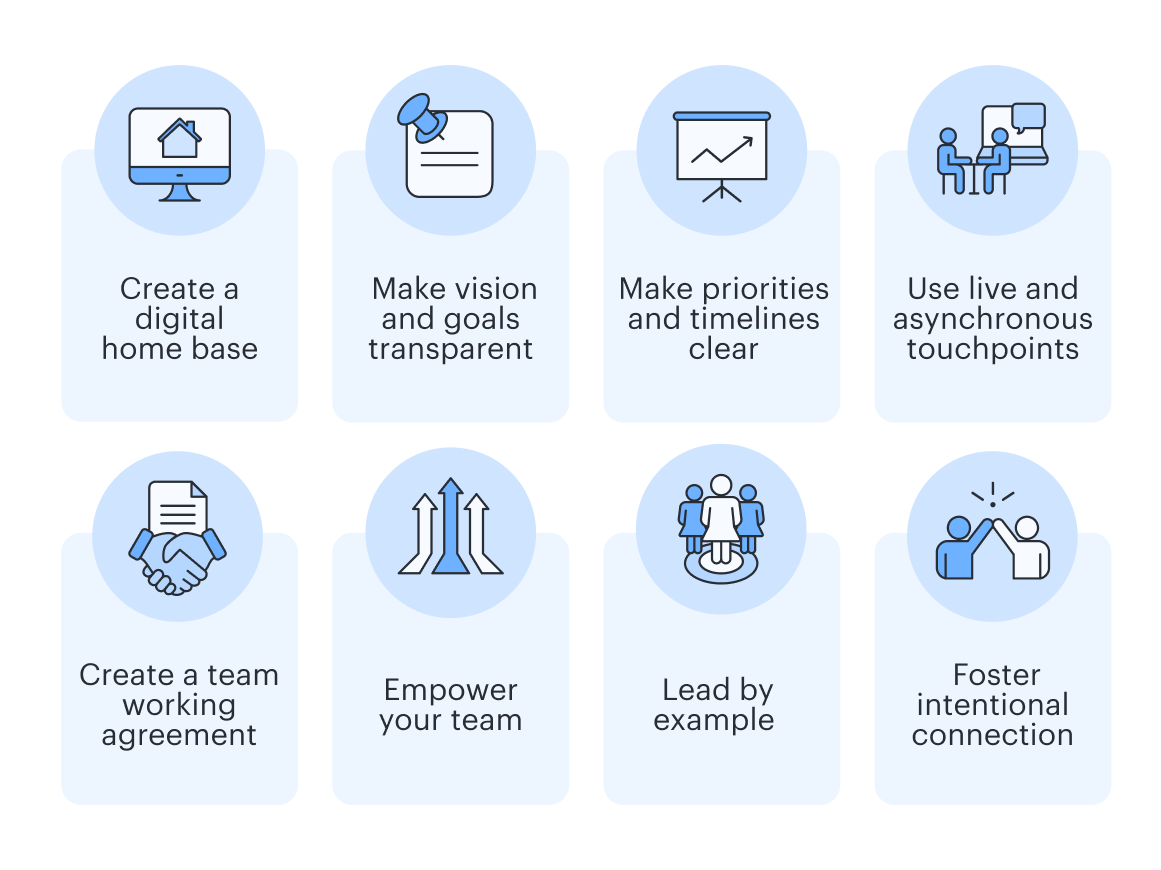
Create a digital home base for your team
One of the first steps to building a successful high-performing team is having a home base for everyone to gather and collaborate. This helps to centralize all team resources, documents, plans, and goals in one shared space—so everyone knows exactly where to go to get the information they need.
Using a digital home base as a means to work together naturally creates valuable artifacts to keep teams aligned. Digital-first collaboration is an intentional approach high-performing teams use to improve alignment, productivity, and knowledge sharing for everyone, not just remote workers.
An online team space makes it easy to establish a digital home base. Lucid’s Visual Collaboration Suite provides a modern-day solution for creating a home base for your high-performing team. In Lucid, you can create a team hub and team space that:
-
Gives your team a space to connect.
-
Centralizes important documentation, including your team charter, team norms, roles, and resources.
-
Increases clarity around goals, priorities, plans, and timelines.
-
Helps facilitate alignment between managers and their teams, as well as cross-functional teams.
-
Fosters continuous collaboration and knowledge sharing.
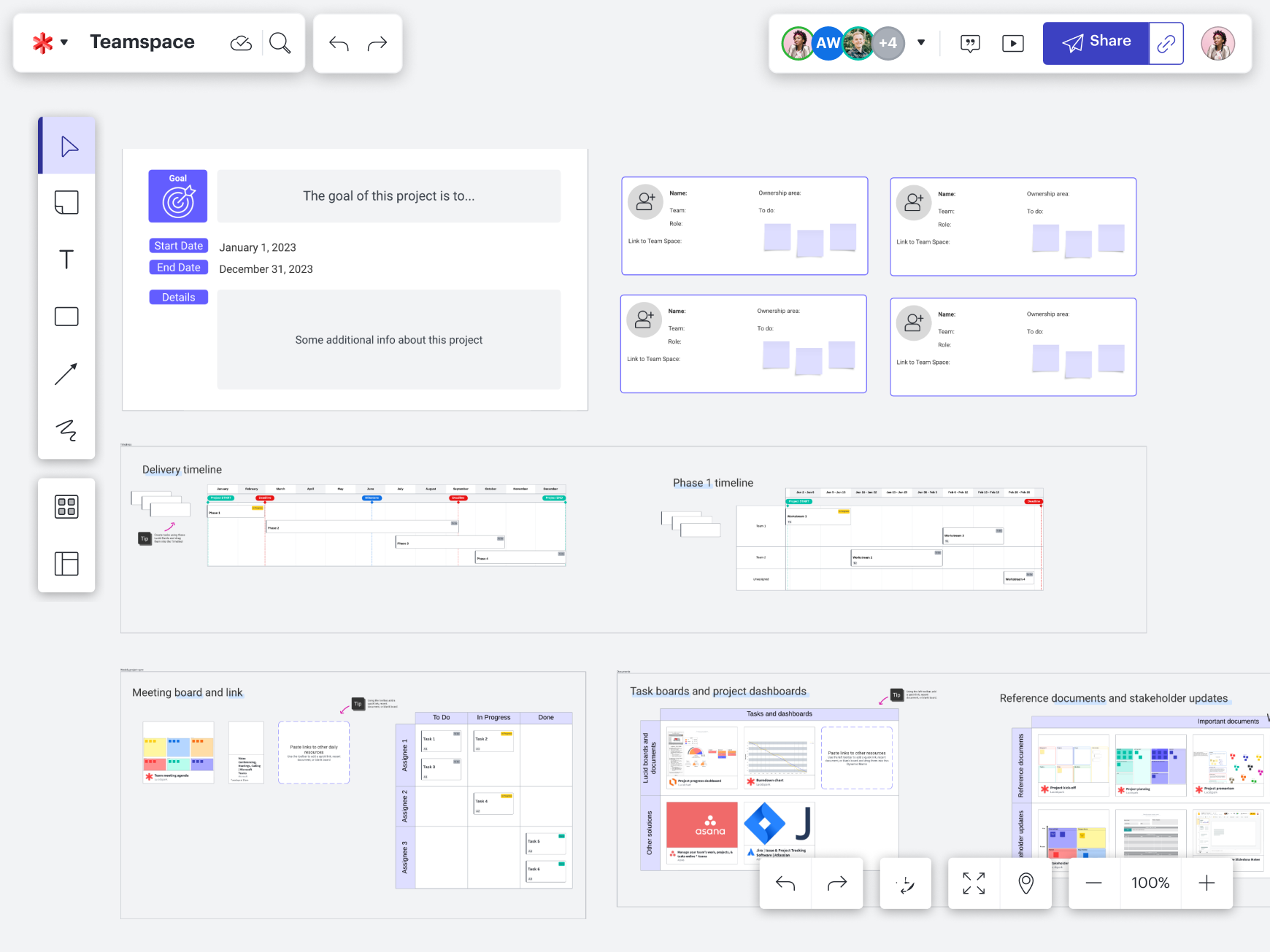
By establishing a team space, you don’t have to waste time searching across different tools or tabs for relevant information—it’s all in one place. This helps your high-performing team communicate clearly, foster high-value collaboration, and it’s a great place to celebrate accomplishments.

Set up your high-performing team space in Lucid
Learn how to set up team spaces and hubs to maximize collaboration.
Learn moreMake the vision and goals transparent
Once you’ve created a digital home base for your team, use it to make sure your team’s vision and goals are documented. Establishing a “vision and goals” section in your online team space ensures that everyone’s able to access this information and see how their individual work aligns with the company’s product vision statement.
Making your vision and goals transparent is beneficial because a high-performing team is consistently aligned on their vision as they move forward in the same direction. Being able to see exactly what they’re working toward helps create motivation and momentum for your team members; individuals who have clarity about their roles are 27% more effective at work. Role clarity also improves trust and retention.
“By keeping the vision visible, constantly communicating about it, and keeping the team aligned, your teams will know what goal they are working towards. These moments energize teams as they work to see and build the future together.”
-Bryan Stallings, Chief Evangelist at Lucid
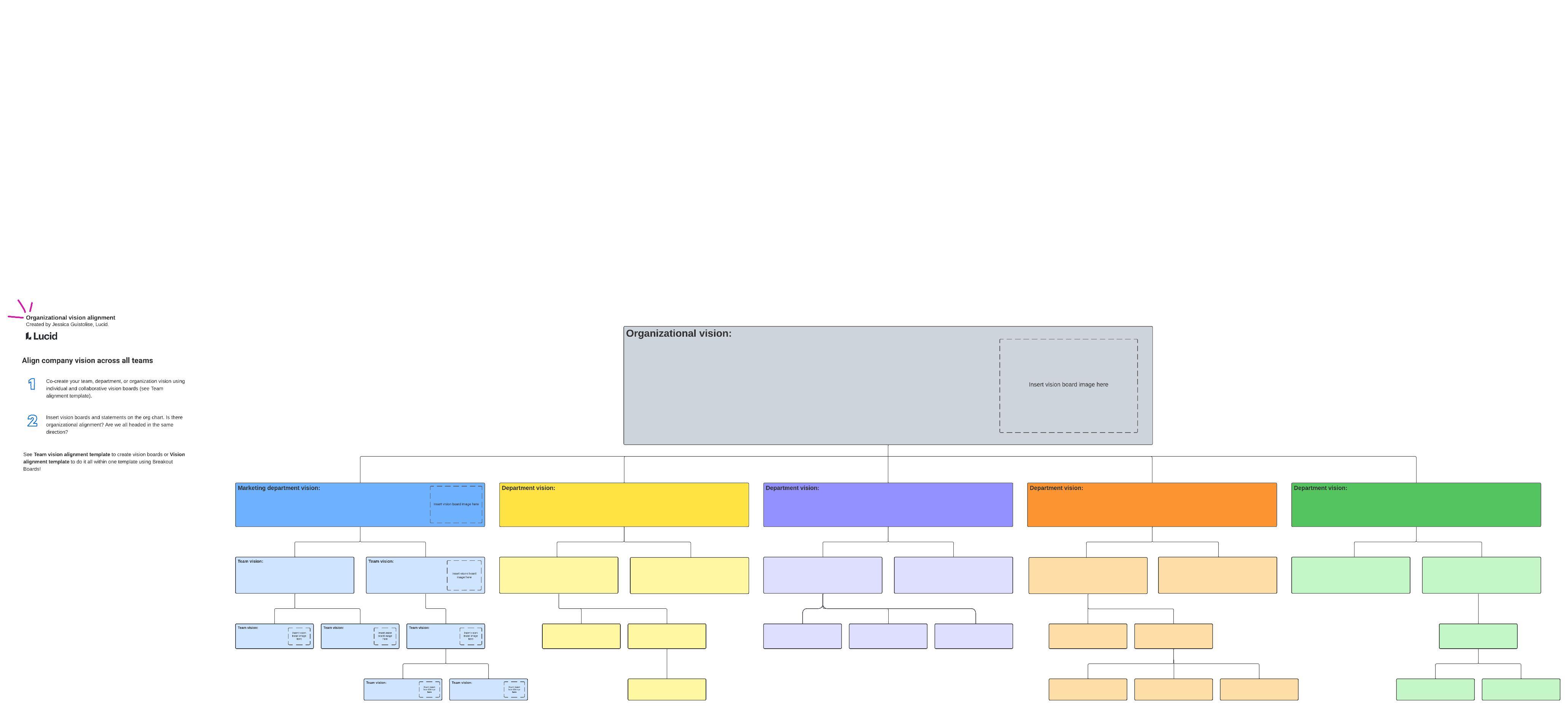
Make priorities, plans, timelines, and roles clear
In your team space, the team’s vision and goals have been communicated—but how exactly are those goals going to be achieved? Each person has individual priorities, timelines, and roles to support the overall vision. Make sure everyone knows what these are so they can manage their tasks accordingly.
Here, it’s helpful to use visuals like task boards and trackers to eliminate any miscommunication. Through the power of visuals, it’s easier to align your team and ensure everyone is on the same page as to who’s taking care of what and when it’s due. It’s also easier to identify bottlenecks or blockers so you’re able to keep your team’s workflow moving.
In Lucid, you can use several tools to provide clarity around your high-performing team’s timelines and roles, such as:
-
Templates that help you visually manage your workflow as you plan tasks and timelines. Use Kanban boards to prioritize projects, timeline templates to map out steps in a process, or an action plan to identify the goals that will help you accomplish a task. You can also use daily standup or sprint planning templates, which have embedded quick tools to guide you through those team events.
-
Organizational chart templates that clearly depict the teams in your organization and according hierarchy. You can create a cross-functional org chart or one that’s for a single team.
-
Integrations with Jira and Azure DevOps featuring bidirectional synchronization. You can use Lucid to visualize dependency data in real time directly in Jira or AzureDevOps, and any new dependencies will automatically sync between the platforms. Then, see how dependencies fit within your overall system.
-
Conditional formatting, which helps you visualize which projects should be prioritized and which ones are overdue. Conditional formatting also helps with identifying blockers so you can see where in the workflow things are being held up.
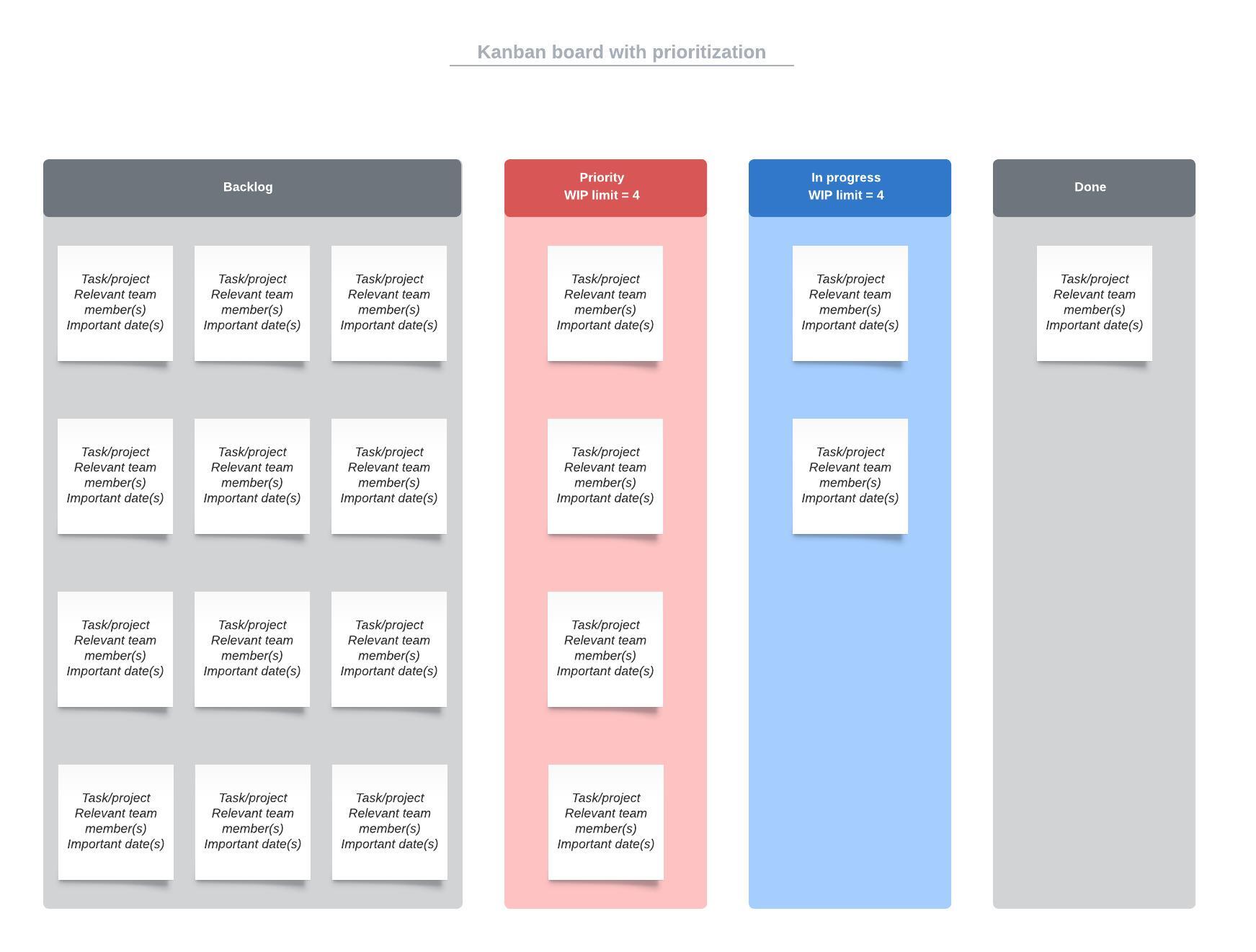
As you find successful charts and trackers for your team to use, keep these (or links to them) in your digital home base. That way everyone on your team can easily find Kanban boards, org charts, and more to stay aligned on their work.

Transform your team by aligning on a strong vision
Learn the key principles of agile leadership that keep your team aligned.
Read moreUse both live and asynchronous touchpoints
For every team, live meetings are a great opportunity to brainstorm, check in about workload, collaborate together, or provide organizational updates. While these live meetings are essential, some of the most innovative contributions come asynchronously as team members work on their own time.
High-performing teams acknowledge the importance of both synchronous and asynchronous collaboration, recognizing that people have different collaboration styles and may prefer to work at their own pace. These real-time and asynchronous touchpoints are especially helpful when team members are distributed across locations or time zones; they ensure everyone is able to contribute as the team stays aligned.
You can use instant messaging, project management systems, and visual collaboration platforms to share information and keep tasks moving forward outside of meetings. High-performing teams leverage these asynchronous collaboration tools to promote transparency, increase efficiency, and celebrate accomplishments.
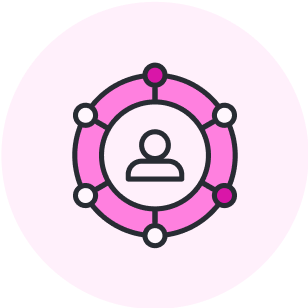
Best practices for asynchronous collaboration
Learn the benefits and best practices of collaborating asynchronously.
Check it outCollectively create team working agreements
A team working agreement is also known as a team contract or team charter. It’s a formal document that provides the guidelines of how a team will work together, and it can also formally detail roles and responsibilities.
Team agreements aren’t solely up to team leaders; it’s a collaborative agreement between all team members, including new members who may bring fresh perspectives. Once you have a team agreement, be sure to document it and keep it in your digital team space for future reference.
Team agreements can be focused around things like:
-
Which communication channels to use for what (e.g., when to send someone an instant message versus email, or whether the team uses chats during meetings).
-
Core working hours and expectations for communication outside of those hours.
-
How to give and receive feedback, and how team members can expect to have their accomplishments celebrated.
-
How to incorporate the different collaboration styles of each team member to enhance cohesiveness and foster a welcoming environment for everyone.
-
How to resolve conflict, as well as the proper channels for reporting issues or incidents.
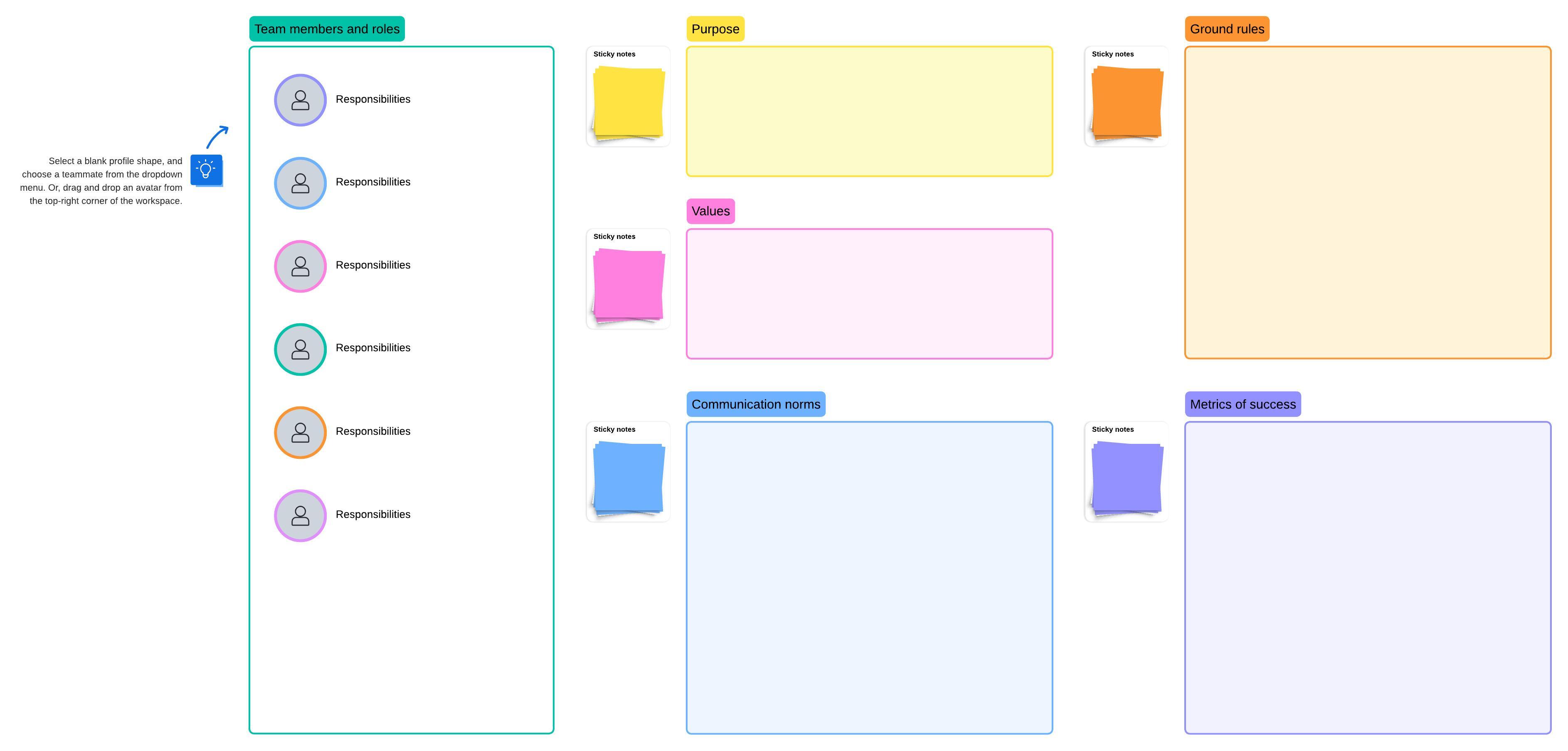

Learn your high-performing team’s collaboration styles
Learn about the 3 different collaboration styles and how to improve communication.
Check it outEmpower your team to make decisions
A hallmark of high-performing teams is a leader-leader structure in which each team member is empowered in their own leadership capabilities. In these teams, every person is given the responsibility to make their own calls as they embody strategic decision-making skills.
This structure is favored by Agile teams rather than the traditional decision-making structure in which only formal leadership positions such as executives can make decisions. Traditionally, team members in non-leadership roles often felt disconnected from their own contributions or were unable to focus on high-value work they should have been prioritizing.
Empowering every person to make decisions for themselves and involving them in the team's decision-making process can help transform team members into high performers. They become more inclined to contribute their thoughts and expertise to brainstorming and other decision-making sessions, which naturally cultivates diverse perspectives. To foster this decision-making, use Visual Activities to give each voice on your team a chance to be heard, and use team estimation activities to get the group’s decision on the effort needed for a task.
As you build your high-performing team, focus on a work environment that empowers each individual to make decisions and lead in their own way. This leadership style unlocks potential, emphasizes autonomy, and embraces experimentation—which, in the end, leads to greater innovation.

Empower your team to make decisions
Learn effective tools and techniques for strategic decision-making.
Get the guideLead by example
High-performing teams begin with their leaders. Developing a high-performing team requires Agile leadership—people who are inspirational to others, empower their team members, and embrace continuous learning.
Agile leaders:
-
Are responsive and value adaptation. They listen to feedback and incorporate changes based on that feedback, showing a willingness to listen and improve.
-
They value customer outcomes rather than employee output, focusing on customer satisfaction and the value delivered by high-quality, impactful work.
-
They have an intentional focus on their people and culture. They empower team members to make their own decisions and enable experimentation, intentionally cultivating a team that values autonomy and innovation.
Make sure your actions match your words. If someone claims they lead a psychologically safe environment that values learning from mistakes, they need to back up their claim by showcasing that it’s safe to fail. If people don’t see their leader embody the characteristics of a high-performing team, then they won’t embody those characteristics either. More than anything, high-performing teams are led by example.
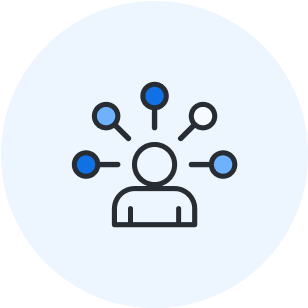
Inspire and empower team members
Learn how to lead and sustain your high-performing team through Agile leadership.
Get the guideFoster intentional connection
Lastly, high-performing teams foster intentional connection every day. They approach coworker interactions with mindfulness, come to meetings prepared for active engagement, and empower each other.
It’s one thing to have the foundation set in place for a high-performing team. The next step is to cultivate the characteristics of a high-performing team as part of your daily culture. This is why successful teams approach their connection with intention, embodying autonomy, psychological safety, clear communication, and high-value collaboration every single day.
Your digital home base is a great tool for fostering this intentional connection, which is especially important for hybrid teams. For people who are fully remote, interactions with coworkers during meetings and other activities are their biggest chance to experience your team’s culture.
Use your team space to enhance connection among your high-performing team with tools such as:
-
Icebreakers and Visual Activities to get to know each other, vote on ideas, and have fun. These can be done to kick off live meetings or done asynchronously.
-
Brainstorming templates to bring everyone together and get a wide range of ideas during the ideation stage of your projects. You can invite people to add their ideas ahead of time.
-
Breakout boards, which break up a large team into smaller groups for easier group discussion. Once you’re done, the whole group comes back together.
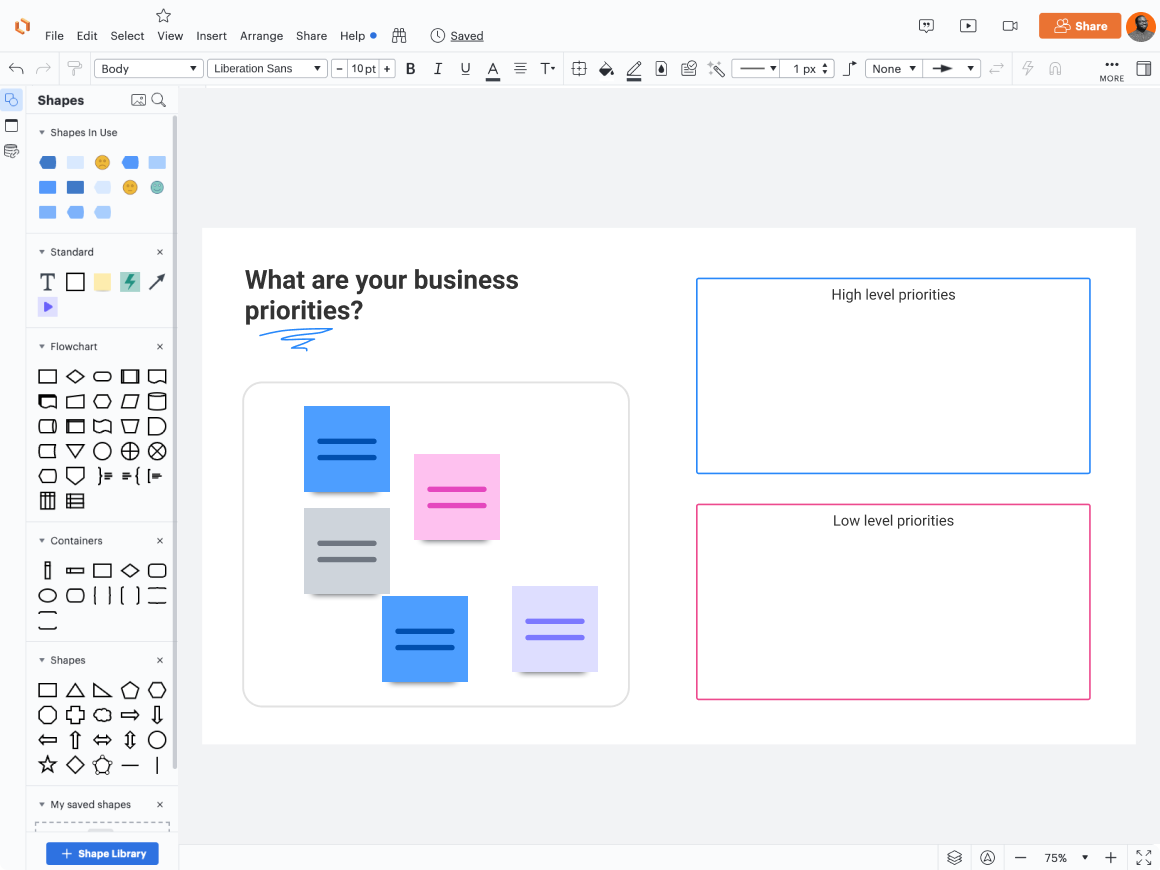
Visual collaboration: An essential aspect for building high-performing teams
High-performing teams are possible at every business. They cultivate a psychologically safe work environment, value collaboration equity, and focus on providing customer value. At the core of every high-performing team are characteristics of high-value collaboration, clear communication, and continuous improvement.
Since our world of work has changed and every team is a distributed team, modern-day solutions are required for modern-day high-performing teams. A visual collaboration platform is essential, because it provides a centralized place for brainstorming, meeting, and sharing information.
Use a visual collaboration platform today to create a digital home base for your high-performing team and foster high-value connection among team members.

How visual collaboration supports Agile teams
Learn how visual collaboration can help you build a high-performing team.
Learn moreAbout Lucid
Lucid Software is the leader in visual collaboration and work acceleration, helping teams see and build the future by turning ideas into reality. Its products include the Lucid Visual Collaboration Suite (Lucidchart and Lucidspark) and airfocus. The Lucid Visual Collaboration Suite, combined with powerful accelerators for business agility, cloud, and process transformation, empowers organizations to streamline work, foster alignment, and drive business transformation at scale. airfocus, an AI-powered product management and roadmapping platform, extends these capabilities by helping teams prioritize work, define product strategy, and align execution with business goals. The most used work acceleration platform by the Fortune 500, Lucid's solutions are trusted by more than 100 million users across enterprises worldwide, including Google, GE, and NBC Universal. Lucid partners with leaders such as Google, Atlassian, and Microsoft, and has received numerous awards for its products, growth, and workplace culture.
Related articles
The “4 C’s” of high-performing agile teams
Agile teams need collaborative environments to experiment and fail safely. Bryan Stallings, Lucid Chief Evangelist, shares the 4 C's of team building.
Traditional vs. agile leadership, explained
In this blog post we will explain traditional leadership vs. agile leadership and share some tips for becoming a more agile leader.
How visual collaboration supports Agile teams
From increasing transparency to simplifying documentation, learn why Agile teams today rely on visual collaboration.
How to create psychological safety at work: Strategies and steps for leaders
Learn how to build psychological safety at work with strategies and steps for leaders.
